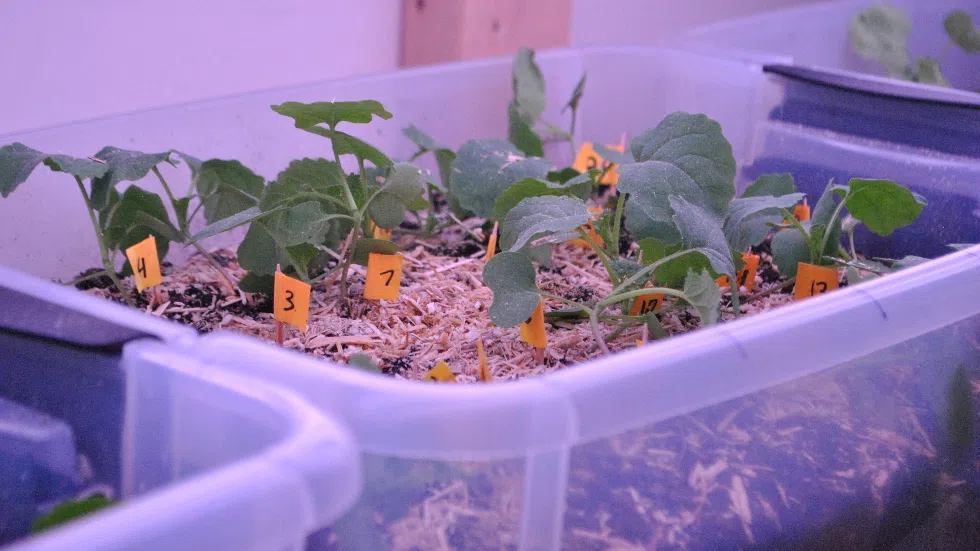
Carlton students conduct canola research at Canadian Light Source
Nine students from P.A.’s Carlton Comprehensive Public High School will head to Saskatoon next week to conduct scientific research at the Canadian Light Source (CLS).
The students on the “Carlton Beam Team,” in Grades 9 to 12, have been studying the effects of potassium supplementation on canola plants infected with blackleg fungal disease. Next week the students will use the CLS beamlines to perform elemental and molecular analysis on the plants, enabling them to conclusively determine the effects of potassium on the disease.
“Our whole question that we want to research and find out at the CLS is if varying the amount of potassium in the soil will affect how the blackleg spreads in the plant,” Katie Tolley, one of the Grade 12 students involved in the project, said.
The students are testing three groups of 20 plants with different potassium levels, as well as a control group. Tolley said roughly 75 per cent of the plants are going to the CLS for analysis, while the others will be monitored at the school for additional data.


